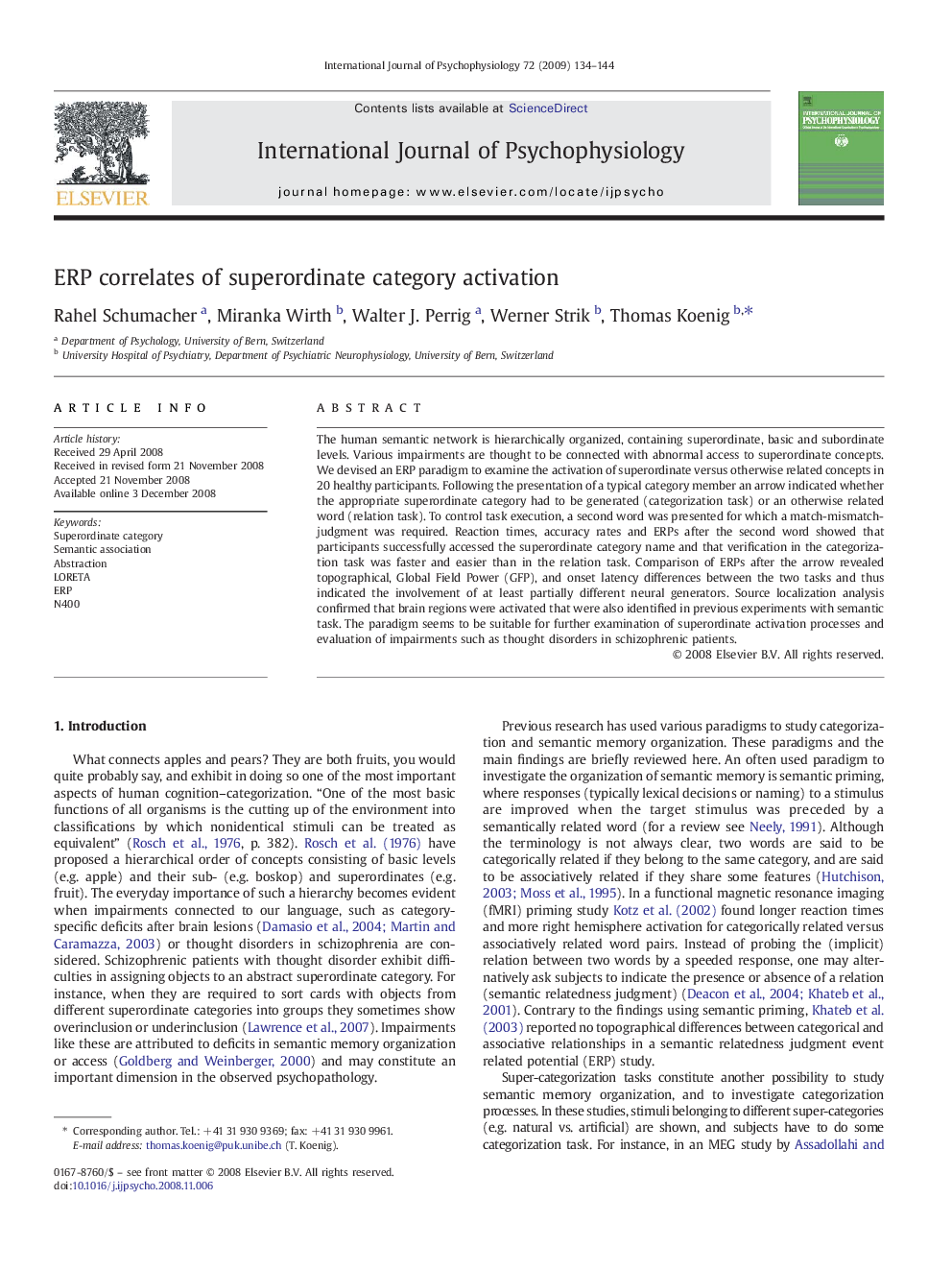| Article ID | Journal | Published Year | Pages | File Type |
|---|---|---|---|---|
| 931005 | International Journal of Psychophysiology | 2009 | 11 Pages |
The human semantic network is hierarchically organized, containing superordinate, basic and subordinate levels. Various impairments are thought to be connected with abnormal access to superordinate concepts. We devised an ERP paradigm to examine the activation of superordinate versus otherwise related concepts in 20 healthy participants. Following the presentation of a typical category member an arrow indicated whether the appropriate superordinate category had to be generated (categorization task) or an otherwise related word (relation task). To control task execution, a second word was presented for which a match-mismatch-judgment was required. Reaction times, accuracy rates and ERPs after the second word showed that participants successfully accessed the superordinate category name and that verification in the categorization task was faster and easier than in the relation task. Comparison of ERPs after the arrow revealed topographical, Global Field Power (GFP), and onset latency differences between the two tasks and thus indicated the involvement of at least partially different neural generators. Source localization analysis confirmed that brain regions were activated that were also identified in previous experiments with semantic task. The paradigm seems to be suitable for further examination of superordinate activation processes and evaluation of impairments such as thought disorders in schizophrenic patients.
